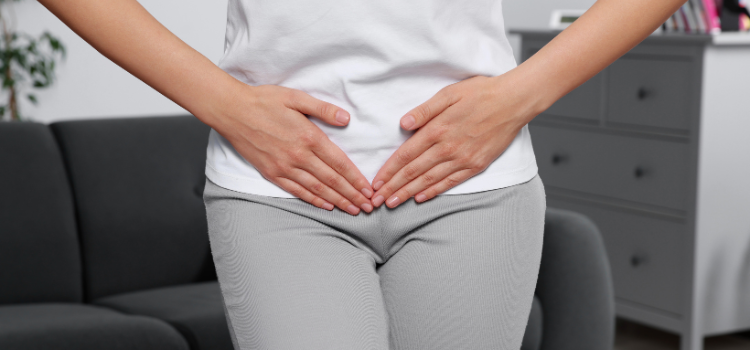N2 Physical Therapy would like to thank Hilary, founder of “Love, Glitter Girl” for her dedication to pelvic floor health and awareness. Please see her article and interviews with Hollie Neujahr, PT, DPT, CLT, CMTPT, MBA and Patty Bomarito, PT, DPT about pelvic floor, physical therapy, and how to find the care you need to achieve the excellent pelvic health you deserve!
Please see the following link for excellent insights from Hilary on her own unique experience with pelvic floor. This includes an article about her journey, and interviews with Dr. Neujahr and Dr. Bomarito on how to identify warning signs of pelvic floor problems, and find the best care for you.
When You Feel the Pelvic Floor There is Help
Please email hollie@n2physicaltherapy.com or patty@n2physicaltherapy.com for any questions.
https://n2physicaltherapy.com/b/pain-sex-and-mysteries-of-male-anatomy-every-man-should-know
Pain, Sex and Mysteries of Male Anatomy Every Man Should Know
Three Useful Facts About Male Anatomy to Promote Pain Free Fitness, Sex and Everyday Living: Unpacking the relationship between the male genitalia, low back and hip and how it effects sex, fitness and everything in between.
What is the pelvic floor and why does it matter?
The pelvic floor muscles and the relationship of these muscles to our back, hips and abdomen is important. In the above picture you can observe how it is positioned in our pelvic girdles, and forms a “center” to our body. These muscles and their relationships to other regions of our bodies are capable of contributing to various types of pain. They are often overlooked in diagnosing common types of pains including, but not limited to, lower back, hips, sacral, hamstrings, coccyx, penile, and perineum. The pelvic floor may also cause or perpetuate problems with sex, penile function, bowel, and bladder. The following 3 facts are pieces of information every man should know about his body, but often is unaware of until after symptoms begin.
Fact One: Back, hip, hamstring, and abdominal pain that you cannot cure may be directly related to your pelvic floor muscles.
Persistent pain in the regions listed above may be signs of pelvic floor problems such as muscle tightness, myofascial trigger points, overuse, muscle weakness, or loss of coordination and control. Because these muscles are designed to work in harmony with the rest of our body, these problems may all lead to overall poor coordination in stabilizing your spine and core.
The pelvic floor is a busy group of small muscles with important attachment points and roles in connection to our entire body. It consists of internal and external muscles specific to the pelvis and important neighboring muscles include obturator internus, the deep lateral rotators, and the adductor muscles. A few indicators that your pelvic floor is involved in other pain syndromes include difficulties with sex, erection, sit bones pain, exercise, or any difficulties with comfort in sitting. Changes to urination and bowel movements may also indicate pelvic floor, and serve as a signal to see a pelvic floor physical therapist.
Muscle strains, myofascial trigger points, muscle coordination issues, generalized weakness in the pelvic floor, muscle spasm, or simply not knowing what the pelvic floor is and how it interacts with your body may all drive pelvic floor problems. Myofascial trigger points, for example, can impede proper control of the pelvic floor, lower back, lower extremities, and manifest in confusing ways. One example of a confusing symptom manifestation is urinary leakage because your muscles are tight and uncoordinated, versus weak. Another example is referred pain in your sacrum caused an active trigger point in your soleus muscle in the lower leg. The pelvic floor is an important part of our core and needs to coordinate properly with our lower back muscles, abdomen, diaphragm. It should respond naturally to bodily functions, including our breathing mechanisms. All of these aspects of pelvic health and wellness need to be addressed properly for us to be truly functional and free of pelvic floor problems.
Fact 2: The pelvic floor has potential to compress nerves and cause symptoms such as burning, tingling, or numbness in the perineum. These problems may especially occur after biking, long term sitting, or long drives.
The pelvic floor as a functional structure is also home to the route of the pudendal nerve. The posterior hip and glute muscles that coordinate and interact intimately with the pelvic floor also interact with important nerves. A few of these nerves include the posterior femoral cutaneous nerve, sciatic nerve, superior and inferior gluteal nerves.
The pudendal nerve is important to know about because it winds through the pelvic floor, and utilizes a canal formed by its attachment to the obturator internus (an important hip muscle!). Throughout the pudendal nerve’s route, it gives off three branches important to our everyday bodily functions. These branches are named the inferior rectal nerve, nerve to perineum, and dorsal nerve to penis. They are all located in regions that have potential to be compressed during sitting, overuse of our backs and hips, or hypertrophy of the hip muscles. In addition to this, changes to the pelvic floor muscle also impact this nerves and its branches.
Issues such as burning in the penis, perineum, groin, or general pelvic area may be related to the pelvic floor. These same issues do not have to be permanent and you can find help. Even though the pain produced by this can be intense and very localized to intimate regions, treatment will help you. Appropriate treatment for a pelvic floor problem focuses beyond just the pelvic muscle region. A proper physical therapy care plan will address the spine, pelvic floor, hips, any other prior injuries that are impacting proper function and movement. A well directed plan will be adaptive to each individual, and include several treatment approaches. These approaches could include myofascial trigger point dry needling, manual therapy, exercise, therapeutic neuroscience, movement training, strengthening, endurance training, fascial treamtent, and more.
Fact 3: Difficulties with bowel, bladder or penile functioning may be a sign that your pelvic floor is struggling.
Pelvic floor problems are complex, and can lead to frustrating, and often alarming symptoms in the bowel, bladder and penis. Difficulties with nerves, muscles, fascia, breathing, coordination, and movement patterns are also likely present when symptoms like these arise. Commonly observed problems our clients with pelvic floor problems report are constipation, leakage of bowel, urinary urgency, urinary frequency, urinary leakage, difficulty completely emptying the bowel or bladder, painful erection, changes to erection, difficulty with ejactulation, pain after intercourse, and pain during sports, general activities or sitting. Proper treatment of the pelvic floor with all other possible contributors will help. Retraining the body, pelvic floor and focusing on improved functional movement, as well as improving behavioral factors such as fluid intake, meditation, and diet will have a positive impact toward healing, and can help cure these symptoms.
Where you can learn more about your pelvic floor and body?
Learning about the pelvic floor and the connections to the pelvic floor may help you manage and prevent the above listed problems. Understanding this and other muscles as a functional system will also enhance your knowledge of low back, hip and sacral function.
Join us in our monthly Men’s Pelvic Health Seminar to learn the anatomy and physiology basics of the pelvic floor, and how it may be contributing to your pelvic pain and other problems. Learn how to take care of your pelvic floor, your body in general, identify when it is necessary to seek medical care, and how these muscles are also an important part of breathing, spinal support, and everyday movement and function.
Our virtual platform provides a HIPAA-compliant and safe environment in collaboration with The Urology Center of Colorado and N2 Physical Therapy. Course creator and Doctor of Physical Therapy Hollie Neujahr will guide you through a provided lecture as well as questions, answers, and ways to start beginning your healing. The course is free to attend, and covers anatomy and physiology education, a brief overview of common pelvic floor problems, and open discussion throughout to meet the needs of each participant. Please bring any questions you have and submit any requests or private questions before and/or after class.
To read more about Dr. Neujahr and view her CV, please follow this link:

